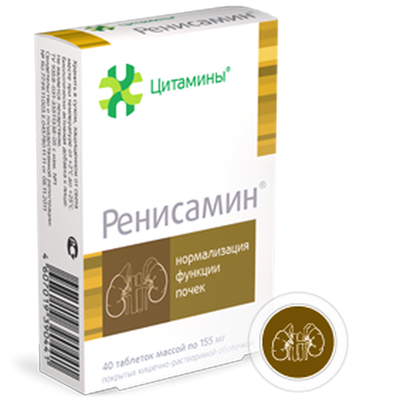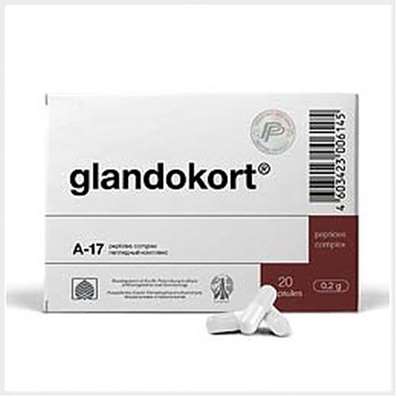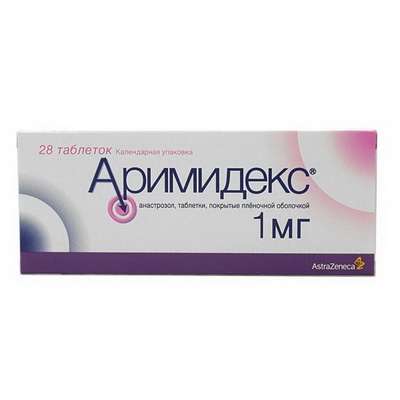Instruction for use: Carbamazepine
I want this, give me price
International Nonproprietary Name (INN): Carbamazepine
Pharmaceutic group: Antiepileptic
Presentation:
tablets 200 mg, ¹50.
Available with prescription
Indications for Carbamazepine
Carbamazepine (CBZ) is an anticonvulsant and mood-stabilizing drug used primarily in the treatment of epilepsy and bipolar disorder, as well as trigeminal neuralgia. It is also used off-label for a variety of indications, including attention-deficit hyperactivity disorder (ADHD), schizophrenia, phantom limb syndrome, complex regional pain syndrome, paroxysmal extreme pain disorder, neuromyotonia, intermittent explosive disorder, borderline personality disorder and post-traumatic stress disorder.
It has been seen as safe for pregnant women to use carbamazepine as a mood stabilizer, but, like other anticonvulsants, intrauterine exposure is associated with spina bifida and neurodevelopmental problems.
Carbamazepine is typically used for the treatment of seizure disorders and neuropathic pain. It may be used as a second line treatment for bipolar disorder and along with antipsychotic agents in schizophrenia.
HISTORY. Carbamazepine was discovered by chemist Walter Schindler at J.R. Geigy AG (now part of Novartis) in Basel, Switzerland, in 1953. Schindler then synthesized the drug in 1960, before its anti-epileptic properties had been discovered.
Carbamazepine was first marketed as a drug to treat trigeminal neuralgia (formerly known as tic douloureux) in 1962. It has been used as an anticonvulsant in the UK since 1965, and has been approved in the U.S. since 1974.
In the United States, the FDA-approved indications are epilepsy (including partial seizures and tonic-clonic seizures), trigeminal neuralgia, and manic and mixed episodes of bipolar I disorder. Although data are still lacking, carbamazepine appears to be as effective and safe as lithium for the treatment of bipolar disorder, both in the acute and maintenance phase.
In 1971, Drs. Takezaki and Hanaoka first used carbamazepine to control mania in patients refractory to antipsychotics (Lithium was not available in Japan at that time). Dr. Okuma, working independently, did the same thing with success. As they were also epileptologists, they had some familiarity with the anti-aggression effects of this drug. Carbamazepine would be studied for bipolar disorder throughout the 1970s.
MECHANISM OF ACTION. The mechanism of action of carbamazepine and its derivatives is relatively well understood. Voltage-gated sodium channels are the molecular pores that allow brain cells (neurons) to generate action potentials, the electrical events that allow neurons to communicate over long distances. After the sodium channels open to start the action potential, they inactivate, in essence closing the channel. Carbamazepine stabilizes the inactivated state of sodium channels, meaning that fewer of these channels are available to subsequently open, making brain cells less excitable (less likely to fire). Carbamazepine has also been shown to potentiate GABA receptors made up of alpha1, beta2, gamma2 subunits.
Trade name of the drug – Carbamazepine
Dosage Form: tablets
Active substance:
Carbamazepine 200 mg;
Excipients: Potato starch - 80.5 mg colloidal silicon dioxide (Aerosil) - 16.4 mg Talc - 3.1 mg magnesium stearate - 3.1 mg, povidone (polyvinylpyrrolidone) - 14.4 mg Polysorbate ( Tween-80) - 2.5 mg.
Description:
Tablets from white to white with a yellowish shade, flat-cylindrical, with Valium and facet.
Pharmacotherapeutic group: Antiepileptic
ATX code: N03AF01
Pharmacological Properties of Carbamazepine
Pharmacodynamics
Carbamazepine is derived dibenzoazepina and has antiepileptic, neurotropic, and psychotropic antidiuretic action.
As an antiepileptic agent, stabilizes the membrane of overexcited neurons inhibits the serial bits of neurons and synaptic transmission reduces the excitation pulses. This step is achieved, presumably due to the blockade of sodium channels, thereby preventing the re-emergence in depolarized neurons sodium-dependent action potentials. It reduces the release of the neurotransmitter glutamate. Carbamazepine psychotropic effect, apparently due to inhibition of metabolism of dopamine and noradrenaline.
Reduces the frequency of attacks, anxiety, depression, irritability and aggression in patients with epilepsy. Effects on cognitive function in patients with epilepsy is variable. It prevents the appearance of paroxysmal pain in neuralgia. When alcohol withdrawal syndrome raises the threshold of convulsive readiness, reduces nervous irritability, tremor, gait disturbance. It is used to treat mood disorders as mood stabilizer and antipsychotic agents. When diabetes insipidus reduces urine output and thirst.
Pharmacokinetics
Absorption - slow, but complete enough (food technique does not significantly affect the rate and extent of absorption). After a single dose, the maximum plasma concentration is reached after 12 hours. Equilibrium plasma concentrations are reached within 1-2 weeks. Among the patients, there are significant differences in the values of individual equilibrium concentrations in the therapeutic range. Communication to plasma proteins is 70 - 80%. The concentration of unchanged carbamazepine in cerebrospinal fluid and saliva proportional to the amount of unbound protein with the active substance (20 - 30%). Concentration in breast milk is 25 - 60% of that in plasma. It penetrates through the placental barrier.
It is metabolized in the liver, principally by way epoxide to form metabolites: active - carbamazepine-10,11-epoxide and less active - 9-hydroxy-10-methyl karbamoilakridan. The basic isoenzyme providing Carbamazepine biotransformation carbamazepine-10,11-epoxide is cytochrome P450 isoenzyme 3A4. The content of carbamazepine-10,11-epoxide is about 30% of the plasma level of carbamazepine. Biotransformation of carbamazepine-10,11 epoxide, carbamazepine-10,11-transdiol occurs using microsomal epoxide hydrolase enzyme. Another pathway carbamazepine - monogidroksilirovannyh formation of various derivatives, as well as N-glucuronides. The half-life after a single dose is an average of about 36 hours (ranging from 25 to 65 hours) after repeated reception - 16-24 hours in patients receiving additionally other antiepileptic drugs that induce liver enzymes, an average of 9-10 hours is derived.. primarily as inactive metabolites in urine (about 70%) and the feces (about 30%). About 2% is excreted in the urine as unchanged carbamazepine and 1% of carbamazepine-10,11-epoxide.
In children, due to the more rapid clearance of carbamazepine may require higher doses of the drug per kilogram of body weight compared to adults.
There is no evidence that the pharmacokinetics of carbamazepine changes in elderly patients. Data on the pharmacokinetics of carbamazepine in patients with impaired renal or hepatic function there.
Indications for Carbamazepine
Epilepsy (monotherapy or in combination therapy):
- Simple and complex partial seizures (with or without losing consciousness) with or without secondary generalization thereof;
- Generalized tonic-clonic seizures. Mixed forms of seizures.
Acute mania and maintenance treatment of bipolar affective disorders to prevent relapse or reduce the severity of clinical manifestations.
In the treatment of alcohol withdrawal syndrome.
Trigeminal neuralgia (idiopathic, multiple sclerosis), idiopathic neuralgia glossopharyngeal nerve.
Pain in diabetic neuropathy.
Polyuria and polydipsia of neurohormonal nature with diabetes insipidus.
Contraindications for Carbamazepine
Hypersensitivity to any component of a drug or chemically similar drugs (TCAs)
atrioventricular block,
inhibition of bone marrow hematopoiesis in history,
hepatic porphyria,
simultaneous reception of monoamine oxidase inhibitors (MAO inhibitors hereinafter) and within 2 weeks after their withdrawal,
during breastfeeding.
Precautions a low level of white blood cells or platelets; Mixed forms of seizures, including absence; in old age; with cardiac, hepatic, or renal failure; elevated intraocular pressure; hyponatremia breeding; hypothyroidism; prostatic hyperplasia; pregnancy (increased risk of intrauterine growth disorders, including malformations).
Carbamazepine Dosage and Administration
Inside, regardless of the meal with a small amount of liquid.
Epilepsy: possible, carbamazepine should be administered in a monotherapy. Treatment is initiated with small daily doses, which thereafter slowly increased until the optimum effect. Accession to the already ongoing carbamazepine antiepileptic therapy should be gradual.
For adults, the initial dose of 100-200 mg 1-2 times a day. Then the dose is slowly increased to 400 mg 2-3 times a day. The maximum daily dose of 2000 mg.
For children up to 5 years initial dose of 20-60 mg per day with an increase of 20-60 mg every two days. In children, the age of 5 initial dose of 100 mg / day, with a consequent increase to 100 mg per week. The maintenance dose for children is 10-20 mg / kg body weight per day for 2-3 hours. To ensure accurate dosing in children under 5 years, it is necessary to use a liquid oral dosage form of carbamazepine.
Trigeminal neuralgia or glossopharyngeal nerves: an initial dose of 200-400 mg / day, and then gradually increase the dose of not more than 200 mg a day until the end of pain (on average up to 600 - 800 mg) is then reduced to the minimum effective dose. In the treatment of elderly patients the initial dose of 100 mg 2 times a day.
Alcohol withdrawal syndrome: the average dose - 200 mg 3 times a day. In severe cases, the first few days, the dose can be increased up to 400 mg three times a day. At the start of treatment for severe withdrawal phenomena given in conjunction with detoxification therapy, sedatives and opiates.
Polyuria and polydipsia with diabetes insipidus: the average dose for adults - 200 mg 2 - 3 times a day. In children, the dose is selected based on body weight and age.
Pain in diabetic neuropathy: 200 mg of 2 - 4 times per day.
Acute mania and maintenance treatment of bipolar affective disorders: a daily dose of 400-1600 mg (mean daily dose of 200-600 mg) for 2-3 hours a day. In severe cases, the dose is increased quickly enough. When increasing the dose maintenance therapy should be gradual and small.
Side effect ofCarbamazepine
Disorders of the nervous system: dizziness, ataxia, drowsiness, fatigue, headache, diplopia, accommodation disturbances, tremors, muscle dystonia, tics, eye, orofacial dyskinesia, oculomotor disturbances, dysarthria, horeoatetoidnye disorders, peripheral neuropathy, paresthesia, paresis, taste disturbances, neuroleptic malignant syndrome.
Violations of the psyche: hallucinations (visual or auditory), depression, anorexia, anxiety, aggressive behavior, agitation, disorientation, increased psychosis.
On the part of the skin and its appendages: allergic dermatitis, urticaria, exfoliative dermatitis, erythroderma, systemic lupus erythematosus, pruritus, Stevens-Johnson syndrome, toxic epidermal necrolysis, photosensitivity reactions, multiforme and erythema nodosum, a violation of skin pigmentation, purpura, acne, sweating, hair loss. It was reported about rare cases of hirsutism, but the causal relationship of this complication with a drug intake remains unclear.
Hematopoietic system: leukopenia, thrombocytopenia, eosinophilia, leukocytosis, lymphadenopathy, folic acid deficiency, agranulocytosis, aplastic anemia, pancytopenia, anemia, pure red cell aplasia, megaloblastic anemia, variegated porphyria, late cutaneous porphyria, acute intermittent porphyria, reticulocytosis, hemolytic anemia .
On the part of the hepatobiliary system: increased rates of gamma glutamintransferazy, alkaline phosphatase, transaminases; hepatitis (cholestatic, parenchymal (hepatocellular) or mixed type), jaundice, granulomatous hepatitis, hepatic failure.
From the gastrointestinal tract: nausea, vomiting, dry mouth, diarrhea, constipation, abdominal pain, glossitis, stomatitis, pancreatitis.
hypersensitivity reactions: multiorgan delayed type hypersensitivity with fever, skin rashes, vasculitis, lymphadenopathy, arthralgia, leukopenia, eosinophilia, hepatosplenomegaly and altered liver function tests (these manifestations occur in various combinations). May involve other organs (lungs, kidneys, pancreas, myocardium, colon). Aseptic meningitis, with myoclonus and eosinophilia; anaphylaxis, angioedema.
Cardio-vascular system: violation of intracardiac conduction; decrease or increase in blood pressure, bradycardia, arrhythmia, atrioventricular block with syncope, collapse, congestive heart failure, aggravation of coronary artery disease, thrombophlebitis, thromboembolism.
On the part of the endocrine system and metabolism: edema, fluid retention, weight increase, hyponatraemia and reduced plasma osmolality due to an effect similar to the action of antidiuretic hormone, which in rare cases leads to water intoxication (hyponatremia dilution), accompanied by lethargy, vomiting, headache pain, disorientation and neurological disorders; increase prolactin levels, accompanied or not by galactorrhea, gynecomastia; reducing the concentration of triiodothyronine and thyroxine, increasing the concentration of thyroid-stimulating hormone, which is usually not accompanied by clinical symptoms; disorders of bone metabolism (decrease of calcium concentration and 25 gidroksikolekaltsiferola plasma), which leads to osteomalacia; increasing cholesterol concentration, including HDL cholesterol and triglycerides.
With the genitourinary system: interstitial nephritis, renal failure, albuminuria, hematuria, oliguria, azotemia, urinary frequency, urinary retention, sexual function disorders, disorders of spermatogenesis.
From the senses: taste disturbance, cataract, increased intraocular pressure, conjunctivitis; hearing disorders.
From the musculoskeletal system: arthralgia, muscle pain, muscle weakness, convulsions.
The respiratory system: hypersensitivity reactions, characterized by fever, dyspnoea, pneumonitis or pneumonia.
Changing laboratory results: hypogammaglobulinemia.
overdose
symptoms
- The central nervous system: depression of the central nervous system up to coma, disorientation, drowsiness, agitation, hallucinations, feeling of "fog" before the eyes, dysarthria, nystagmus, ataxia, dyskinesia, hyperreflexia replaced at hyporeflexia, convulsions, psychomotor disturbances, myoclonus, hypothermia , mydriasis;
- Respiratory system: respiratory depression, pulmonary edema;
- Cardiovascular system: tachycardia, decrease or increase in blood pressure, cardiac conduction with the expansion of the QRS complex, cardiac arrest;
- Digestive system: vomiting, delayed evacuation of food from the stomach, decreased motility of the colon;
- Urinary system: urinary retention, oliguria or anuria, fluid retention, hyponatremia breeding;
-laboratornye indicators: metabolic acidosis, hyperglycemia, increased muscle creatine phosphokinase fraction, hyponatremia.
Treatment: there is no specific antidote. Gastric lavage, the appointment of activated carbon (late evacuation of gastric contents may result in delayed absorption for 2-3 hours and re-emergence of symptoms of intoxication), hospitalization, symptomatic therapy. Ineffective forced diuresis, hemodialysis and peritoneal dialysis (dialysis shows a combination of severe poisoning and renal failure). It recommended holding hemosorption on coal sorbents.
Interaction
Concomitant use with CYP3A4 isoenzyme inhibitors can lead to increased plasma concentrations of carbamazepine. The combined use of inducers of CYP3A4 may accelerate the metabolism of carbamazepine and a possible decrease in its plasma concentrations. Cancel the received simultaneously CYP3A4 inducers can reduce the rate of biotransformation of carbamazepine and carbamazepine lead to increased plasma levels. In an application with drugs metabolized by CYP3A4, it is possible induction of metabolism and reducing their concentration in plasma.
Drugs that may increase the concentration of carbamazepine and carbamazepine-10,11-epoxide in plasma:
dextropropoxyphene, ibuprofen, danazol, macrolide antibiotics (e.g. erythromycin, troleandomycin, josamycin, clarithromycin), fluoxetine, fluvoxamine, nefazodone, paroxetine, trazodone, viloksazin, stiripentol, vigabatrin, azoles (e.g., itraconazole, ketoconazole, fluconazole, voriconazole) Loratadine , terfenadine, loxapine, olanzapine, quetiapine, isoniazid, viral protease inhibitors for the treatment of HIV infection (such as ritonavir), acetazolamide, verapamil, diltiazem, omeprazole, oxybutynin, dantrolene, ticlopidine, nicotinamide (in adults, high dose only) possible - cimetidine, desipramine, primidone, valproic acid.
Drugs that may reduce the concentration of carbamazepine in plasma:
felbamate, metsuksimid, oxcarbazepine, phenobarbital, fensuksimid, phenytoin, fosphenytoin, primidone, progabid, theophylline, aminophylline, isotretinoin, rifampicin, cisplatin, doxorubicin; herbal preparations containing St. John's wort, and, although data are contradictory, possibly also clonazepam, valproic acid or valpromid.
Effect of carbamazepine on the plasma concentrations of drugs used as concomitant therapy:
Carbamazepine may lower the plasma concentration or reduce or even reverse the effects of the following drugs: methadone, paracetamol antipyrine, tramadol, doxycycline, oral anticoagulants (warfarin, phenprocoumon, dikumarol, acenocoumarol), bupropion, citalopram, trazodone, tricyclic antidepressants (imipramine, amitriptyline , nortriptyline, clomipramine), clobazam, clonazepam, ethosuximide, felbamate, lamotrigine, oxcarbazepine, primidone, tiagabine, topiramate, valproate, zonisamide, itraconazole, praziquantel, imatinib, clozapine, haloperidol, bromperidol, olanzapine, quetiapine, risperidone, ziprasidone, used for the treatment of HIV infection (indinavir, ritonavir, saquinavir), alprazolam; midazolam, theophylline, calcium channel blockers, dihydropyridines group (e.g., felodipine), digoxin, oral contraceptives (requires selection of alternative methods of contraception), glucocorticoids (e.g., prednisolone, dexamethasone); tacrolimus, everolimus, levothyroxine sodium, estrogen and / or progesterone. It has been reported that in patients receiving carbamazepine phenytoin plasma levels may either rise or fall, and mefenitoina level - to rise (in rare cases).
Combinations to be taken into account:
Perhaps increased hepatotoxicity caused by isoniazid, in the case of simultaneous application with carbamazepine.
In the case of a joint appointment with levetiracetam, may increase the toxic effect of carbamazepine.
Combined use lithium and carbamazepine or metoclopramide, and carbamazepine and neuroleptics (haloperidol, thioridazine) can lead to increased incidence of adverse neurological reactions (in the case of the last combination - even at therapeutic concentrations of active substances in the blood plasma).
Concomitant use of carbamazepine with some diuretics (hydrochlorothiazide, furosemide) may lead to hyponatremia, accompanied by clinical symptoms.
Carbamazepine may antagonize the action of non-depolarizing muscle relaxants (eg, pancuronium bromide). In the case of this combination of drugs may be necessary to increase these doses relaxants; should be carried out careful monitoring of patients, since it is possible more rapid than expected, the termination action of muscle relaxants.
Co-administration with grapefruit juice can increase plasma levels of carbamazepine.
special instructions for Carbamazepine
Before beginning treatment and periodically during the treatment of clinical blood tests should be performed (including platelet count, reticulocyte count and serum iron concentration), general urinalysis, and determining urea level in blood. The drug has mild anticholinergic activity. Therefore, in the case of the drug in patients with elevated intraocular pressure requires constant monitoring of this indicator.
Recommended periodic determination of carbamazepine concentration in plasma in the case of increasing the frequency of epileptic seizures in the treatment of children, pregnant women, in the case of its application in the complex therapy, the development of significant side effects.
There are anecdotal reports of male fertility disorders and / or disorders of spermatogenesis. However, the causal relationship of these disorders with the administration of the drug to date has not been proved.
Cross hypersensitivity reactions can occur between carbamazepine and oxcarbazepine or phenytoin.
In the period of treatment should refrain from activities potentially hazardous activities that require high concentration and psychomotor speed reactions.
At the time of treatment should abandon admission alcohol as carbamazepine increases the inhibitory effect of alcohol on the central nervous system.
Release form of Carbamazepine
200 mg tablets.
10 tablets in blisters. According to 1,2,3,4 or 5 contour cell packages with instructions for use in paper cartons.
500, 600, 1000, 1200 tablets in a jar polymer (for hospitals). Bank together with instructions for use in a pile of cardboard.
Storage conditions of Carbamazepine
In a dry, dark place at a temperature no higher than 25 ° C.
Keep out of the reach of children.
Shelf life of Carbamazepine
3 years.
Do not use beyond the expiration date printed on the package.
Conditions of supply of Carbamazepine from pharmacies
With prescription.

 Cart
Cart





